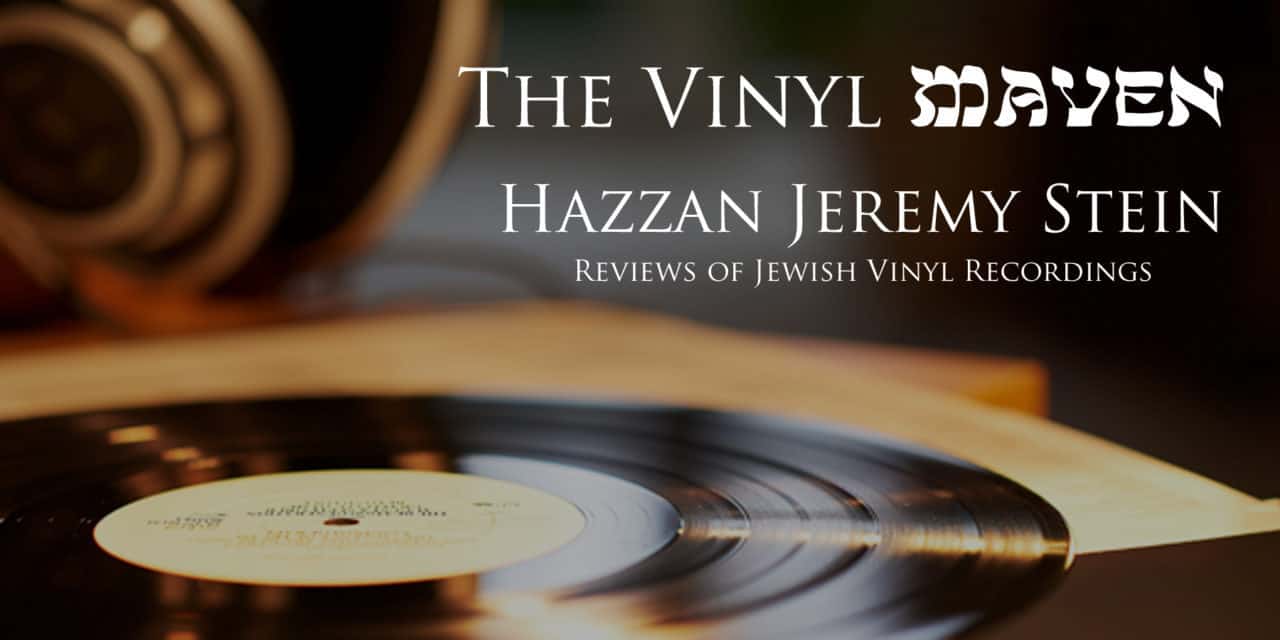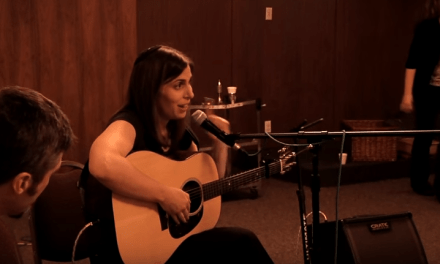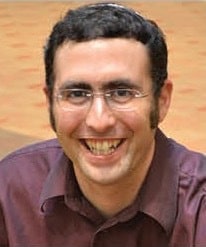
Hazzan Jeremy Stein
There are the classic cantors, Broadway shows (nearly every collection has at least one version of Fiddler on the Roof), and 1970's rock services. Folk songs in Hebrew, Yiddish, and Ladino. There's comedy, jazz, and historical speeches.
I write about these albums through the lens of a modern hazzan, steeped in tradition, but born and raised decades after many of them were recorded. It is my goal to discover and rediscover meaning and appreciation for the classics, lost treasures, and dated oddities and curiosities. I hope to share what I discover with you, and welcome your thoughts along the way.
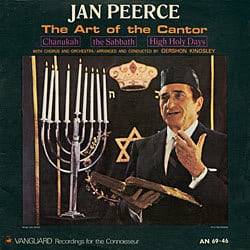 the inaugural album to review for this site. Why, of all the High Holiday albums out there, did I choose one by Jan Peerce? My Grandpa Joe z"l loved cantorial music, and Jan Peerce was one of his favorites. So when I began my path towards being an cantor, it was only natural that I gravitated towards a familiar name. At my neighborhood record shops, where I regularly searched for jazz and classic rock records, I found a few Jan Peerce albums filed under "Jewish/Israeli" in the "World Music" section. These initial records formed the beginning of my ever-expanding Jewish music LP collection.
the inaugural album to review for this site. Why, of all the High Holiday albums out there, did I choose one by Jan Peerce? My Grandpa Joe z"l loved cantorial music, and Jan Peerce was one of his favorites. So when I began my path towards being an cantor, it was only natural that I gravitated towards a familiar name. At my neighborhood record shops, where I regularly searched for jazz and classic rock records, I found a few Jan Peerce albums filed under "Jewish/Israeli" in the "World Music" section. These initial records formed the beginning of my ever-expanding Jewish music LP collection.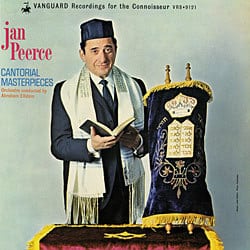 As a fledgling cantorial student, one of my instructors asked me "Which hazzanim do you listen to?" "Well," I said confidently, "I really like Jan Peerce." "Jan Peerce?" he snapped. "Jan Peerce wasn't a hazzan. He recorded some cantorial albums, but that wasn't until much later in his career." "Well," I said, buying time to figure out how I would get out of this mess as my instructor looked at me sternly, "I recently started listening to Ganchoff." "Oh!" he said. "He's a real hazzan." I let out a sigh of relief. I was off the hook (at least until my instructor's next question which I'm sure I also muffed). Ever since, I've been thinking about that conversation and about Jan Peerce's credentials as a true cantor.
As a fledgling cantorial student, one of my instructors asked me "Which hazzanim do you listen to?" "Well," I said confidently, "I really like Jan Peerce." "Jan Peerce?" he snapped. "Jan Peerce wasn't a hazzan. He recorded some cantorial albums, but that wasn't until much later in his career." "Well," I said, buying time to figure out how I would get out of this mess as my instructor looked at me sternly, "I recently started listening to Ganchoff." "Oh!" he said. "He's a real hazzan." I let out a sigh of relief. I was off the hook (at least until my instructor's next question which I'm sure I also muffed). Ever since, I've been thinking about that conversation and about Jan Peerce's credentials as a true cantor.
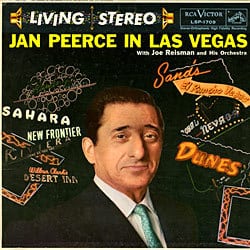
On the other hand, there is a difference between the singing of Peerce, and many of the classic hazzanim. Without analyzing what the differences may be (I would like to avoid both technical aspects of vocal production as well as clichés such as a "polished" versus "raw" quality), I will just say that a certain ta'am, recognizable in the voice of many famous cantors, is lacking in Peerce's singing. That vocal flavor that is so hard to describe, but so undeniable when you hear it. The type of sound that would have my teacher,
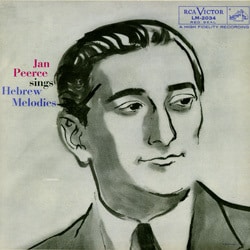 Cantor Jack Mendelson mumble"Yum, yum" as he gently chewed, and moved his tongue around his mouth, or call out "Mommy!" upon hearing a well executed cadence with a pithy coloratura and a nuanced Ashkenazi inflection.
Cantor Jack Mendelson mumble"Yum, yum" as he gently chewed, and moved his tongue around his mouth, or call out "Mommy!" upon hearing a well executed cadence with a pithy coloratura and a nuanced Ashkenazi inflection.
"Yum yum?" "Mommy?" What do these words mean? Absolutely nothing, but at the same time, everything. It is as if to say, "This is the real thing, and I'm deeply moved by what I've heard to the point of emitting silly, almost baby-like nonsense in an effort to express what proper language cannot truly convey." As I listen to Jan Peerce sing, I am truly inspired and impressed. If only I could sing with such power and control. And yet, I do not hear Cantor Mendelson's voice imparting any of his classic climactic utterances as I do when I listen to other, classic hazzanim. All that having been said, I still love the music!
The Album: Rosh Hashanah Service
Rosh Hashanah Service opens with a Torah Service composed by Meyer Machtenberg. While Machtenberg is probably best known for his frolicking, entertaining Sheheheyanu, his Torah Service is a solemn setting, well suited for the High Holidays. From the start, Peerce is impressive with his bold, resonant voice on Ein 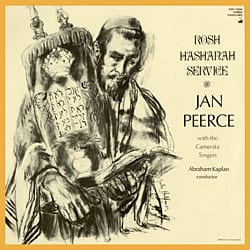 Komocho, but also displays a contrasting supple sound, particularly on the word "vashalom." Listen carefully during the second time through Adoshem Adoshem and you'll hear a quote from The Great Aleinu of the High Holidays.
Komocho, but also displays a contrasting supple sound, particularly on the word "vashalom." Listen carefully during the second time through Adoshem Adoshem and you'll hear a quote from The Great Aleinu of the High Holidays.
Another highlight is Uvashofar Godol composed by Leo Low and arranged by Morris Barash, one of the greatest composers/arrangers of cantorial music (click here for a great story with Morris Barash from Cantor Mendelson's website). Although I wrote above that there is a hazzanic ta'am absent in Peerce's singing, if there is a moment on the album which contradicts this observation, it's Peerce's rendering of the words "lifkod al tz'va marom badin, ki lo yizku b'einekha badin." Peerce sings these words with krechts, glottal H sounds at the end of words, and distinctly Ashkenazi inflections on words such as "yizku b'einekha," sung as "yiz'ku b'eineiy'kha" (just as Cantor Mendelson taught us to do in school). Peerce finishes the phrase with a great cantorial coloratura on the word "badin." (Definitely a "Yum yum" moment!)
On "k'vakarat ro'eh edro," Peerce sings a pretty duet with one of the altos. This lyrical melody reminds me of what Cantor Mendelson would call a "ditty," a short melodic passage in a cantorial setting, that the congregation can sing or hum along with.
The album concludes with two fun pieces, Hayom, composed by Joshua Lind and arranged by Morris Barash, and Chassidic Kaddish arranged by Cantor David Kusevitsky and Herman Zalis. The former opens with no less than nineteen recitations of the word Hayom (lest we forget which day the piyut is talking about) with subsequent verses reaching double digits as well. The setting ends with a dramatic Amen from cantor and choir, resolving with a major chord to make the informed musician smile in amusement at this gratuitous picardy third (or roll his eyes).
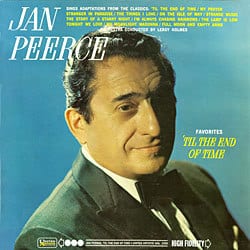
While some true aficionados of hazzanut may find something stylistically lacking in Peerce's singing, I still find Rosh Hashana Service to be an enjoyable album. If, ultimately, the album is not authentic hazzanut, it is, nevertheless, authentic Jan Peerce, and well worth a listen.
All Album Photos: https://rsa.fau.edu/artist/695
